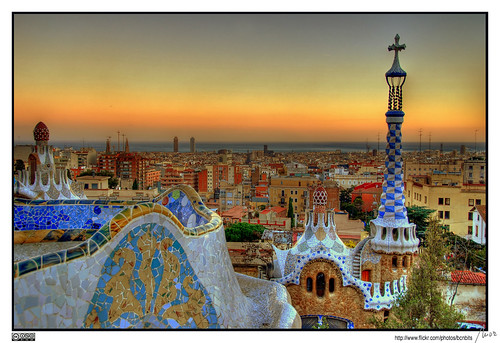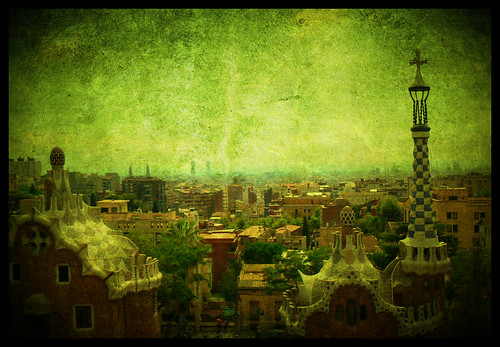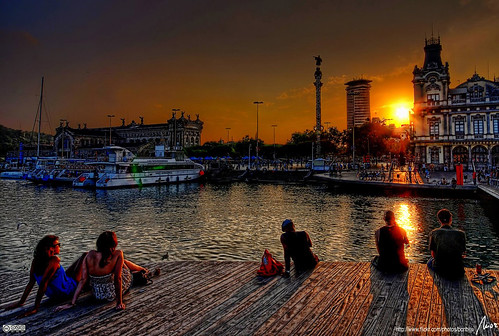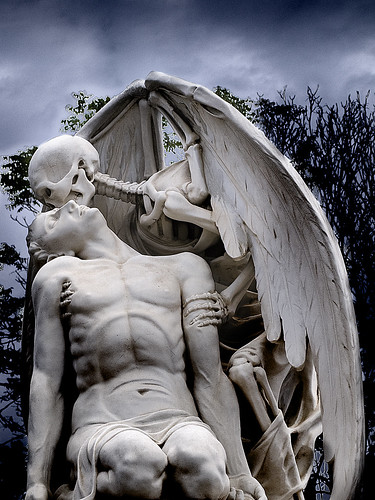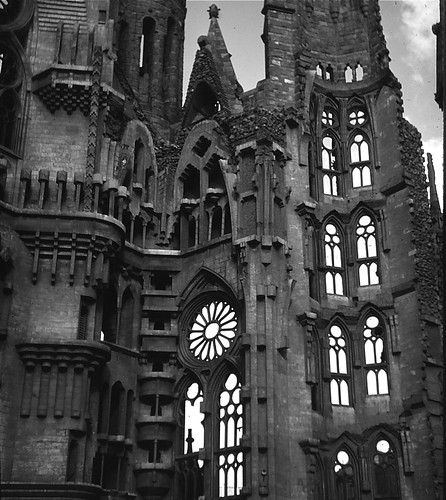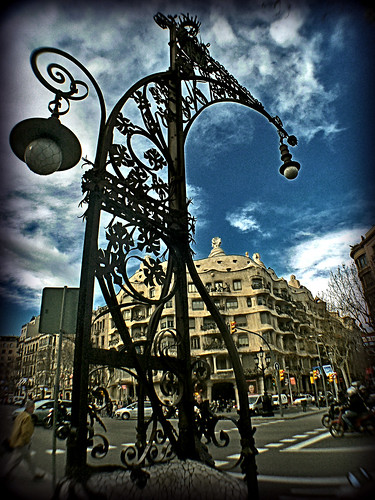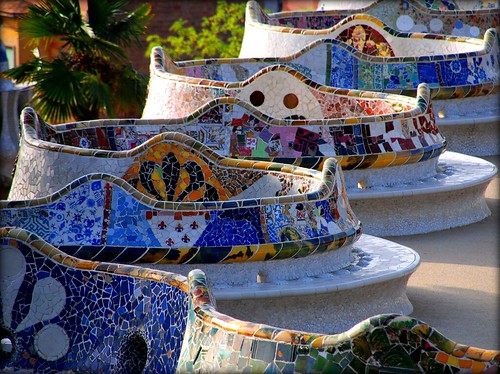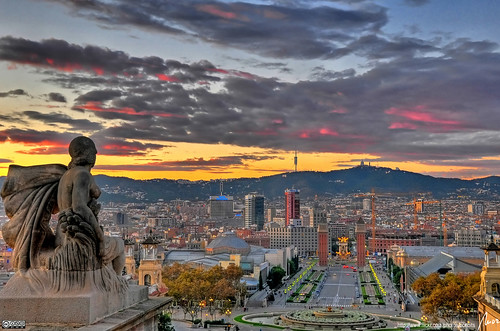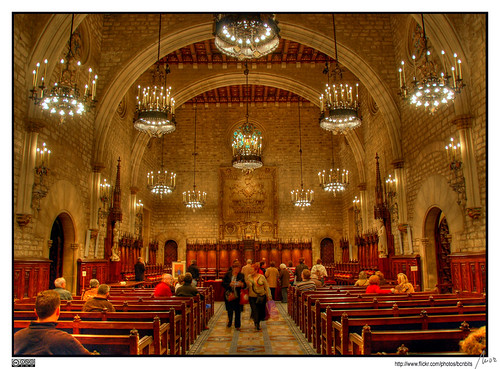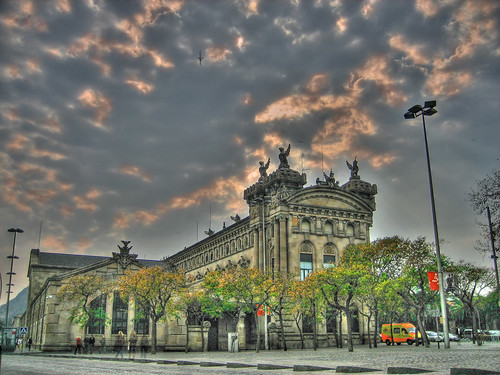




We wonder how many of those sex and surf tourists look at the mountain that overshadows popular party places like Playas Las Americas and ever wonder – “Will it be today?” Las Cañadas caldera, Mount Teide – Not dead just sleeping!
Las Cañadas caldera, located at the central part of Tenerife, Canary Islands, is a large volcanic depression (16 x 9 km). The caldera is opened to the sea at the north side and filled by continuous layers of lava flows and fall deposits. These volcanic deposits form a good hydrogeological trap which is the largest ground water reserve of the island. In comparison, the basement of the caldera has low permeability. Numerous galleries (horizontal drains) intercept the Las Cañadas aquifer. During the last century, this aquifer has been overexploited depleting the water table as well as the water quality. The Teide-Pico Viejo volcanic complex is located at the margin of the caldera. The ascent of deep magmatic gases (e.g. CO2) confers aggressiveness to the waters causing rock dissolution and alteration. The aim of this work is to study water-rock interactions in Las Cañadas aquifer. Chemical diagrams showing the relative composition of Mg, Ca, Na and K as described by Giggenbach (1988) indicate that the waters discharged by the galleries correspond to the process of rock dissolution and evolution towards full rock-fluid equilibrium. The lower contents in Ca and Mg are found in the galleries which reach more deeply the north flank of the Teide Volcano, suggesting mineral precipitation and heating in this zone. Geochemical modeling of fluid-rock interactions using Chiller (Reed and Spycher, 1984) show that the gases discharged at Teide summit cannot generate the water compositions observed at Las Cañadas. These gases represent the separated phase of a condensation process within the volcanic edifice. Modeling of the gas-enriched Las Cañadas waters from the recharge zone with phonolitic rocks from the caldera show that the galleries waters correspond to the dissolution of 1 to 7 g of rock/liter of water and a relatively shallow circulation. The simulations suggest that waters have not encountered the ˜ 250° C temperature region suggested by the gas geothermometers. This behavior suggests that the heat source in this system is deep as suggested by geophysical studies.
Las Cañadas caldera, located at the central part of Tenerife, Canary Islands, is a large volcanic depression (16 x 9 km). The caldera is opened to the sea at the north side and filled by continuous layers of lava flows and fall deposits. These volcanic deposits form a good hydrogeological trap which is the largest ground water reserve of the island. In comparison, the basement of the caldera has low permeability. Numerous galleries (horizontal drains) intercept the Las Cañadas aquifer. During the last century, this aquifer has been overexploited depleting the water table as well as the water quality. The Teide-Pico Viejo volcanic complex is located at the margin of the caldera. The ascent of deep magmatic gases (e.g. CO2) confers aggressiveness to the waters causing rock dissolution and alteration. The aim of this work is to study water-rock interactions in Las Cañadas aquifer. Chemical diagrams showing the relative composition of Mg, Ca, Na and K as described by Giggenbach (1988) indicate that the waters discharged by the galleries correspond to the process of rock dissolution and evolution towards full rock-fluid equilibrium. The lower contents in Ca and Mg are found in the galleries which reach more deeply the north flank of the Teide Volcano, suggesting mineral precipitation and heating in this zone. Geochemical modeling of fluid-rock interactions using Chiller (Reed and Spycher, 1984) show that the gases discharged at Teide summit cannot generate the water compositions observed at Las Cañadas. These gases represent the separated phase of a condensation process within the volcanic edifice. Modeling of the gas-enriched Las Cañadas waters from the recharge zone with phonolitic rocks from the caldera show that the galleries waters correspond to the dissolution of 1 to 7 g of rock/liter of water and a relatively shallow circulation. The simulations suggest that waters have not encountered the ˜ 250° C temperature region suggested by the gas geothermometers. This behavior suggests that the heat source in this system is deep as suggested by geophysical studies.
At the summit of Mount Teide, one of the largest Island volcanoes in the World is the Las Cañadas caldera. The crater, which is an enourmous sixteen kilometres across, is a picture of what Hell might look like if it cooled a little. Shear walls that formed when the caldera first collapsed encircle this dry and alien place. And, with an arrogance than can only be accepted as typical, humanity has built roads and observatories across this no mans land that is little more than a plug over a sleeping yet still active and very large volcano. When we visited it some years ago we were standing in the viewing gallery when the ground beneath our feet trembled and several windows suddenly cracked. The sleeping giant was grumbling in its sleep. The land mass created by the volcano is Tenerife in the Canary Islands.
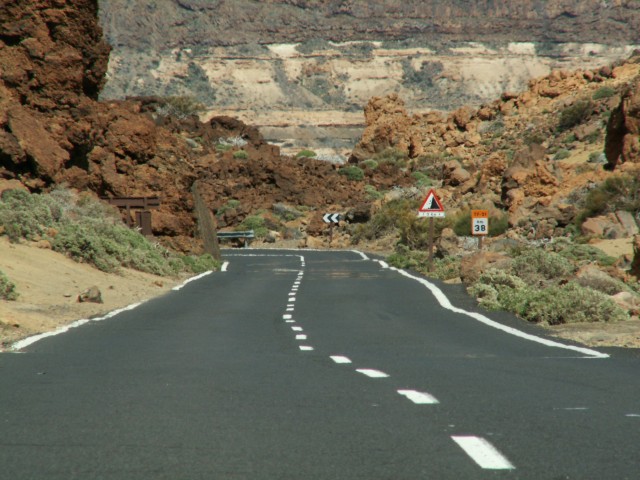







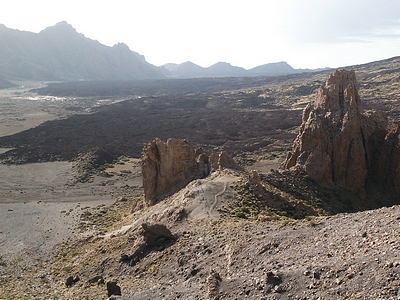


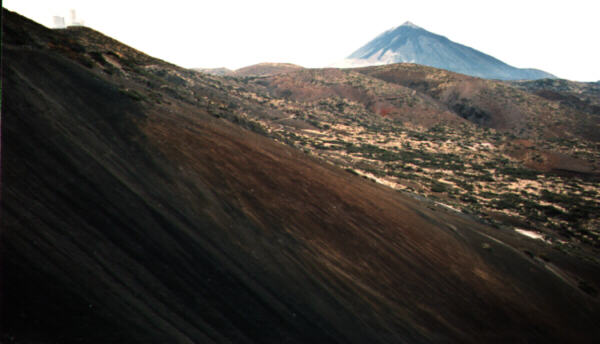



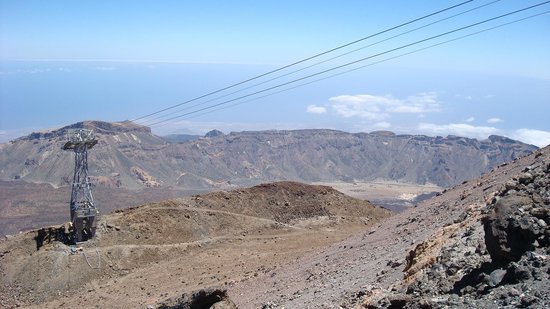 source 1 2
source 1 2
















 source 1 2
source 1 2














